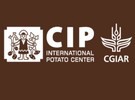A new study finds that consumers who have seen genetically modified (GM) potatoes growing in a field and heard about their advantages for farmers and the environment adopt a more favorable view of GM crops in general.
Pests and diseases have been a scourge to agriculture since agriculture began, and they still destroy about 20 percent of crops planted globally, even though farmers spray 2.7 million tons of insecticides and fungicides on fields globally each year.
Those agrochemicals constitute a significant expense and risk to human and environmental health, but the good news is breeding approaches to develop disease-resistant varieties of staple crops are progressing in leaps and bounds. This is particularly the case with biotechnology, yet consumer fears are holding back the development or release of many biotech varieties, leaving the field clear for devastating outbreaks of crop diseases such as potato late blight.
A ubiquitous, airborne disease that destroyed potato crops in Ireland and resulted in a famine that caused one million deaths in the 19th century, late blight still affects most of the 18 million hectares used to grow potato crops today. While fungicide spraying can reduce the losses it causes, not all farmers have access to or can afford that agrochemical, especially small-scale growers in developing countries, where late blight costs farmers an estimated USD 2.75 billion annually in production loss and fungicides.
Breeders have successfully developed high-yielding potato varieties well-adapted to a wide range of countries, but resistance to late blight has been a challenge. While some of the potato’s wild relatives are highly resistant, getting the genes responsible for that resistance from wild potatoes into commercially viable ones has resulted in potatoes with bitterness or other characteristics people don’t like. This requires a long and tedious process of backcrossing to weed out undesirable “wild” traits.
“It could take multiple decades to produce a variety that has the wild plants’ disease resistance and the characteristics of a commercially popular potato,” explains Marc Ghislain, Principal Scientist, Biotechnology at the International Potato Center (CIP) and a co-author* of the study."
Ghislain explains that biotechnology has enabled breeders to transfer resistance genes from wild potato species into established varieties without changing any of their other characteristics. “Farmers who grow those potatoes have little risk of crop loss or need for fungicides. They are also likely to quickly adopt them because they know there is market demand for them,” he says. “To take those varieties to scale, however, we need consumer support.”
While food safety agencies agree that crop varieties developed using gene technology in plant breeding are as safe for human consumption as those bred conventionally, genetically modified (GM) food crops continue to evoke strong consumer reactions – mostly negative – particularly in Europe.
For more information:
CIP International Potato Center
Headquarters Avenida La Molina 1895
La Molina Apartado 1558
Lima 12, Peru
Tel: 511-3496017
cipotato.org
